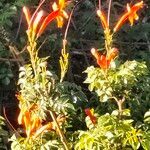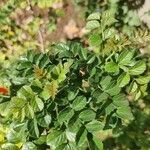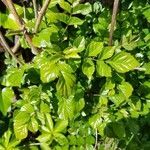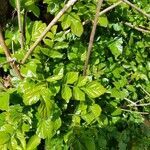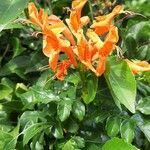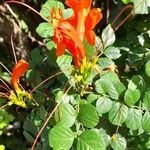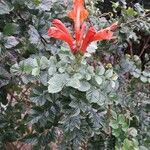A climber. It is a scrambling shrub. It grows 4 m high. The leaflets are in 2-4 pairs. There is a larger leaflet at the end. The leaflets are 2.5 cm long by 1.5 cm wide. The flowers are tube shaped and in clusters. They are bright orange-red.
An erect and scrambling shrub, up to c. 3 m, never in my experience a true climber. Leaflets 2-4 pairs, crenate, with domatia, 1-3 by 1-2 cm. Corolla tubular, red, rarely pale yellow, 4-5 cm.
